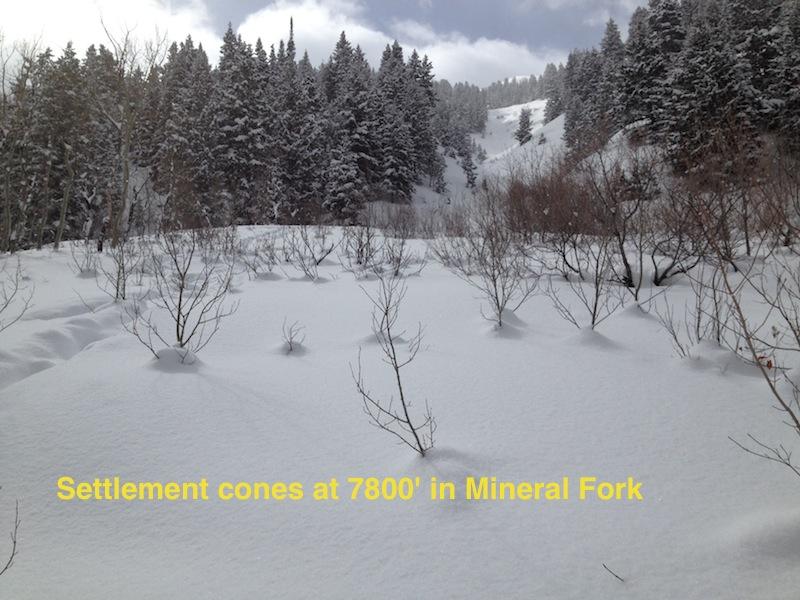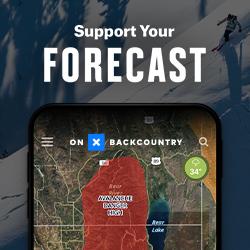Traveled up to 9000' today and found mostly stable conditions. Although was expecting to find wind deposited snow buried underneath the new snow on this ridgeline from Saturday's winds, we did not find any. Saturday's storm snow had settled to a 4F slab 25 cms (~10") thick. ECT's on a north-facing pit at 9000' only got poor quality Q3 fractures. Ski cuts on steep aspects easily instigated the top 15 cms new to sluff at its interface with the old snow surface, but they were not very fast nor would they run very far. (Dave Kikkert noted some faceting in the snow surface on 2/25, so it's possible this was the weakness.)
I haven't been in this drainage since January 5, but in my few earlier visits, I was finding a very weak snowpack, so was curious what we would see today. Although snowpack depths are still generally thin (about 120 cms (4')), overall the snowpack looked better than I expected with mixed forms of facets/rounds in the bottom 50-60 cms of snow. Facets from early and mid-January were not reactive to stability tests.
Overall a mostly Low danger where we were traveling today, but I suspect this was largely because we kept elevations < 9000' where there wasn't much wind affect from this past weekend.

Really appreciated reading Drew's account of his quick trip to the Ruby Mountains where he explained his thought process for skiing in avalanche terrain. Brett has had at least one talk this season describing his methods as well. Thought about this a bit today and here's a brief summary of my thinking:
I was expecting a generally weak snowpack where we were traveling and knew the likely hazard was wind drifted snow from this past weekend. With 15 cms new snow overnight, also knew these would be covered up, so they would require digging down to find them. Ascending a ridgeline I dug several quick hand pits as well as pole probes and could not find any buried wind slabs. No cracking or collapsing. First run we kept slope angles 30-33 degrees. I had a general idea of the snow structure and later dug a pit and only got poor quality fractures with no propagation from extended column tests. Feeling good about the structure. Later skied steeper 35+ lines on an adjacent, yet higher elevation and more exposed ridgeline, but only after first digging down to make sure the structure was similar and there weren't any buried wind slabs.



